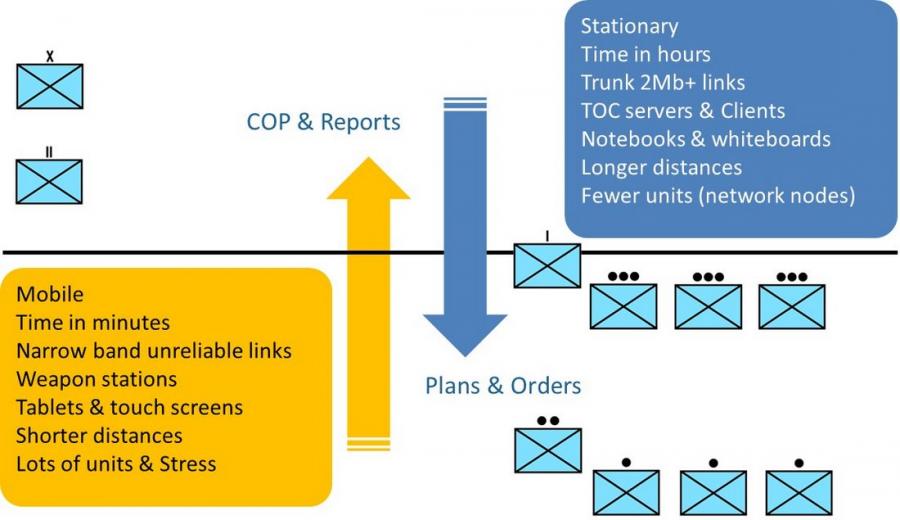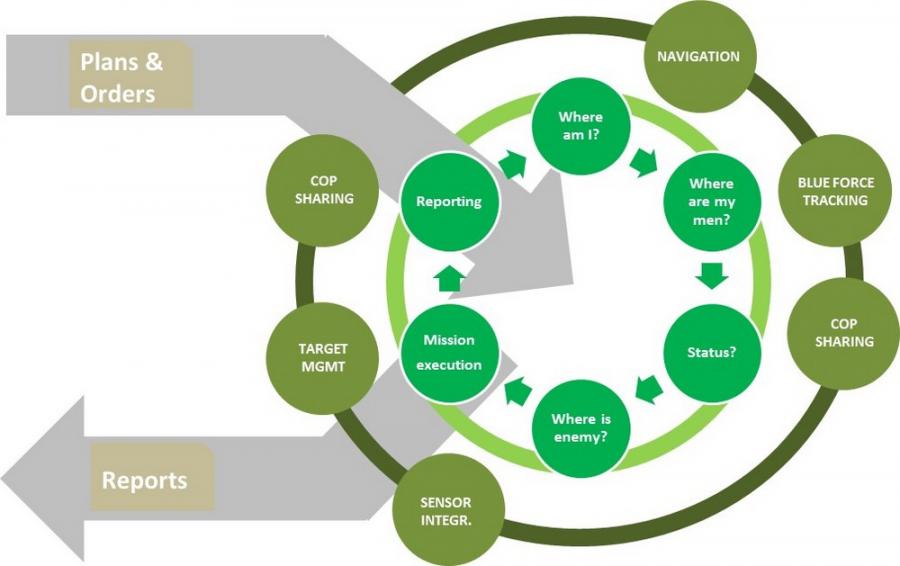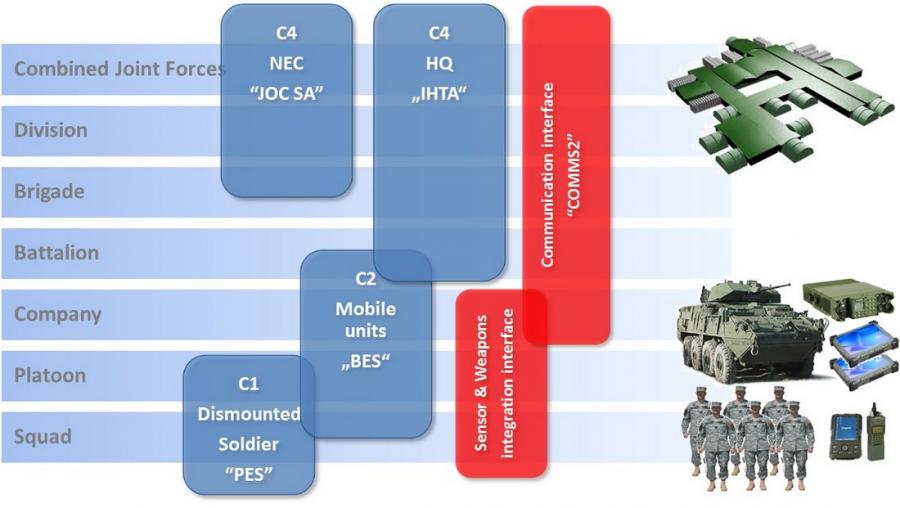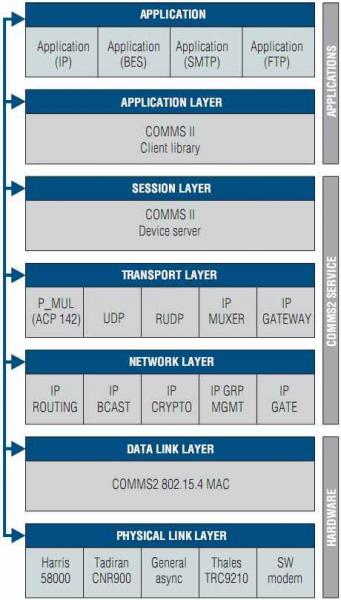MIL C4I - Battle System
What is Command & Control?
Command and control, or C2, in a military organization can be defined as the exercise of authority and direction by a properly designated commanding officer over assigned and attached forces in the accomplishment of the mission.
The DOD Dictionary of Military and Associated Terms defines it as “the exercise of authority and direction by a properly designated commander over assigned and attached forces in the accomplishment of the mission. Command and control functions are performed through an arrangement of personnel, equipment, communications, facilities, and procedures employed by a commander in planning, directing, coordinating, and controlling forces and operations in the accomplishment of the mission. Also called C2.”
Commanding officers are assisted in executing these tasks by specialized staff officers and enlisted personnel. These military staff are a group of officers and enlisted personnel that provides a bi-directional flow of information between a commanding officer and subordinate military units.
The purpose of a military staff is mainly that of providing accurate, timely information which by category represents information on which command decisions are based. The key application is that of decisions that effectively manage unit resources. While information flow toward the commander is a priority, information that is useful or contingent in nature is communicated to lower staffs and units.
The MIL C4I Battle System
Battle C4I Battle System focus on Command & Control process, covering all levels from the individual soldier to the top (planning) levels of military command structure. It covers Sensor & Weapons integration, GIS navigation and mapping system, Communications suits, and integrated training tools. MIL C4I software is designed on true mission requirements, and feedback from the soldiers. MIL software can act as a true force multiplier when used in correct manner. Command and control refers to the ability of military commanders to direct forces. The addition of communications to the grouping reflects the fact that communications is required to enable this coordination. In modern warfare, computers are also a key component.
MIL C4I System is divided into several products, each tasked with a special role in relation to the level of the command and control system for which it is designed. Functionality vise, products are divided into three areas:
- Planning (C4)
- Execution (C2 / C1)
- Communications
As user requirement are widely different on C4 and C2/C1 layers, software functionality is organized in the same way: C4 level product have emphasized planning related functionalities, while C2 level products, focuses on execution, weapon sensor integration, and reporting. The main goal of the whole MIL C4I Battle system is to provide support for uninterrupted digital chain of command and control, from the individual soldier, up to top level command.
The Planning / Execution division
Command level planning process, is completely different from the execution level process. This is also the reason, that planning and execution functionalities are split between IHTA (planning) and BES (execution) products. But the gap doesn’t stop with the process. Environment, time scale and profile of users add to the picture as well.

It is reasonable to expect, that command staff above company level will focus on commanding, while personel below company level will mostly focus on execution, where equipment and environment usually don’t afford officer a chance to involve in planning process beyond the level of dissemination, and reporting.
The planning
Is an orderly, analytical process, which consists of a set of logical steps to examine a mission; develop, analyze, and compare alternative COAs; select the best COA; and produce a plan or order. It provides a proven process to organize the work of the commander, staff, subordinate commanders, and other partners, to develop plans that will appropriately address the problem to be solved. It focuses on defining the military mission and development and synchronization of detailed plans to accomplish that mission Operational Art and Operational Design Interface with the Joint Operation.

The execution
The execution level is where most of today available products falls short of delivering the right amount of functionality, with low enough level of complexity, and expected speed and reliability. The C2 level - Battle Eye System offers unprecidented combination of state of the art computer technology and inovation, to support needed functionalities without overburdening users with options they would only seldomely need.

It is clear, that not only environment is quite different on planning and exectuion level, but the process differ as well. This is the reason why MIL C4I Battle system is designed differently for each level. Design difference is based upon:
- Environment specifics (mostly static / highly dynamic - mobile)
- Networking and bandwith (backbone high bandwith links / unreliable VHF combat network)
- Hardware used (laptops / touch screens)
- User requirements
MIL C4I Battle system products matrix

JOC SA
JOC level software provides joint staff and task force commanders with up-to-date detailed picture of operations. It aggregates information from military and civilian data feeds, including plans from underlying C2IS system, to generate a common operational picture for land, maritime, air and joint operations.
IHTA – Intelligent Headquarters Tactical Assistant
Built on the same fundamentals as its mobile counterpart, TAC HQ offers a robust and modular architecture built around a high performance GIS Engine. The “C2IS” delivers all tactical data to the screens and overheads of the command staff in a modern tactical operations center. It offers a wide range of connectivity to various data networks, improves the command and control process and enhances situational awareness. It helps gather and share information and present it in a most clear and understandable fashion. It features a high productivity, industry standard windows interface, which all users finds familiar.
BES – Battle Eye System
With its robust and modular architecture built around a high performance GIS Engine, the “BMS” delivers all tactical data to the screen of the soldier. It offers a wide range of connectivity to various data networks, improves the command and control process and enhances situational awareness. It helps gather and share information and integrates several navigation, weapon and sensor systems. “BMS” features a battle-proven intuitive touch screen user interface designed to be used in vehicles moving over rough terrain.
PES – Personal Eye System
Soldiers on the battlefield today need in formation that is derived from data, distributed through fast digital networks and gathered by advanced sensors. The new soldier’s equipment kit allows each unit to share real-time information with other units, coordinate movement and react to battlefield conditions quickly and accurately. Network-centric warfare is a relatively new concept that unifies all the advantages gained by other elements of the newly developed digital components. Dismounted Soldier System is a personal tracking, navigation and data sharing application aimed at soldiers, police, security forces, emergency services and others that need topographic navigation, tracking, blue force tracking, and common operational picture sharing. Designed to run on a popular Android platform, can be used as a PDA (Personal Data Assistant) or fully integrated in a future soldier’s kit.
CS – Component Server (Sensors & Weapons)
It is an advanced server that integrates various military vehicle information, and communication systems. The integration server communicates with different systems by using various standards throughout the internal vehicle network or through serial connections. It serves relevant data to personnel inside the vehicle. It also can expose CNR specific integrated Blue Force Tracking data to user applications.
COMMS2 – CNR abstraction communications layer
A hardware abstraction layer providing connectivity among different military communication equipment and networks. It acts as a software driver for different Combat Network Radios (CNR), offering reliable and unreliable communication services over radio networks and supporting a multitude of radio modem devices. A fixed, standardized, well documented socket-like programming interface is open towards the client with ability to send and receive messages with the corresponding transmission status notifications.
BRIDGE – Interoperability suite
Core element of Battle Eye System interoperability suite, is a connectivity gateway. Interconnecting different C4I systems into one seamless coalition command and control system. Modular architecture shares the same design principles with other MIL products thus ensuring maximum expandability and connectivity. All filtering and data transformation is configuration based minimizing the need for frequent software upgrades.
Building the network
Combat radio network, is the most important element of the system. Numerous deployments of different C4I systems have failed for this reason alone. MIL C4I Battle System is designed to work in o heterogeneous networking environment, and is specifically built for military communications from the ground up. The two most significant layers of Mil C4I networking are:
- COMMS2 - low level communications layer, which takes care of physical equipment interfacing, retranslation, and dynamic routing.
- WFD - War Fighting Data protocol, which exchange and distribute the COP data between units, according to ORBAT structure and logical rules.
COMMS2 – CNR abstraction communications layer
COMMS2 is a common communications layers, used by all elements in MIL C4I Battle system. It acts as a software driver for different Combat Network Radios (CNR), offering reliable and unreliable communication services over radio networks and supporting a multitude of radio modem devices. It offers a fixed, standardized, well documented socket-like programming interface, which is open towards the client with ability to send and receive messages with the corresponding transmission status notifications. COMMS2 is a complete hardware abstraction layer, saving software developers from radio specific communication stack implementations. Through device driver plug-ins it supports different legacy ASYNC (serial) radio modems, modern IP radios, and some more exotic communication stacks.

Modular design
COMMS2 offers maximum flexibility and quick add-on development capability. New hardware is supported simply by adding new Combat Network Radio (CNR) drivers. In the same fashion, COMMS2 can be extended with new protocols in the form of add-on modules.
UDP broadcast and RUDP
COMMS2 can utilize a native radio broadcast network topology for fast and unreliable (no confirmations) transport layer for Blue Force Tracking, Chat, Alert and beacon mode operations. Unicast and Multicast modes are supported by the RUDP, or the more complex ACP 142 protocol.
Routing
Reliable protocol data can be routed across radio networks. In order to minimize overhead traffic COMMS2 implements efficient wireless network route discovery protocol. Unreliable protocol data can be rebroadcasted if necessary.
WFD - War Fighting Data protocol
Distributes the data according to ORBAT structure, logical networks (PANs) and the content of transmitted data. COP sharing, Messaging, Blue Force Tracking, Targeting, Chat etc. is distributed over the COMMS2 layer by the WFD protocol.

WFD will take advantage of radio network physical specifics, and will broadcast the data to all the nodes in the same network. Unit commanders, that are present in upper and lower network at the same time, act as gateways which aggregate the information and resend only the relevant data in order to keep the traffic at minimum. Although “lateral communication” between neighboring units is technically possible via COMMS2 routing or rebroadcast functionality it is generally avoided.
WFD also acts as a QOS, and will prioritize the data transmission based on content. (e.g. Alerts, and BFT will get the priority over regular chat messages)
The C4I capability
With the MIL C4I Battle System fully deployed, customer not only gets the top of the line capability, but flexibility as well. Communication and interoperability modules are available downright to the squad level. This gives armed forces commanders the flexibility to seamlessly integrate into the coalition forces, not only on a battalion level and higher. Highly portable BRIDGE component extends the integration possibility on a granularity of a single vehicle if needed.
 Basic requirement for any C4I system is to support a full digital line of command from the HQ, down to the dismounted soldier. MIL C4I Battle system, delivers that functionality along, with specially tailored user interface, and set of features for every level.
Basic requirement for any C4I system is to support a full digital line of command from the HQ, down to the dismounted soldier. MIL C4I Battle system, delivers that functionality along, with specially tailored user interface, and set of features for every level.
Joining the coalition
Beyond the ability of two or more computer systems to exchange information, semantic interoperability is the ability to automatically interpret the information exchanged meaningfully and accurately in order to produce useful results as defined by the end users of both systems. To achieve semantic interoperability, both sides must refer to a common information exchange reference model. The content of the information exchange requests are unambiguously defined: what is sent is the same as what is understood.
MIL C4I Battle System is well prepared to be a part of a larger coalition network. Through the use of a highly portable, configurable and modular BRIDGE component. BRIDGE service can be coupled with any products in the C4I suite, from the dismounted soldier up. Affording commanders to seamlessly integrate with a larger coalition force even on levels small as an individual platoon, or integrate on a top level scale into a full network centric environment.
MIL C4I System has proven it interoperability and flexibility time and again, on international testing and largest coalition exercises. Not only connecting with the coalition, but also acting as a communication hub, forwarding the data between NATO systems and other national systems in the network.
Supporting the fighting spear
Logistics is high on a list in any modern army. Yet support specialists are hard to find, and readiness preparation times are growing shorter. MIL C4I Battle System was designed to be robust as possible, simple to use, and easy to deploy and maintain.

Based on true mission requirements, with state of the art technology is built with a fighting soldier in mind. With simple and intuitive user interface enabling the users to unlock the full potential of the system, while keeping it simple for the support personnel to deploy, upgrade and maintain.
Mission requirements dictate the required performance of the system and required resources. Low requirements for the infrastructure services, makes the MIL C4I system easy to deploy configure and support.
- No Installation required for majority of components
- Runs from USB stick memory or external disk
- Unified GIS system, eliminating the need for map conversion and special tools
- User roles, access security and encryption are built in the system. Active directory or IP Sec infrastructure is not mandatory.
- No requirement for 3rd party software (MS/Oracle databases or Office tools)
Technology built in military systems and weapons platforms is reliable and complex. This also means that its modernization cycle differs from civilian IT rules. AT Comms has a decade of experience in supporting military IT, and has put its experience in building MIL C4I Battle System.
- MIL C4I software doesn’t require latest and greatest hardware to operate on
- Can be remotely deployed over the network
- Quality is paramount as lives depend on the operation of the software
- Compatibility is retained between versions for easy upgrades
- Older CNR and sensor equipment is supported through drivers
- Old hardware is easy to change, and new is easy to integrate
Users must focus on a mission. C4I system (and especially C2 and C1 segments) is a part of a weapons platform. Everybody expect the weapon to work every time they pull the trigger. Weapons must be simple to use, and simple to maintain. MIL C4I Battle System was designed with this goal in mind. User interfaces are specifically designed to be intuitive, and easy to use under stress. This not only improve soldier’s overall performance, but put less strain on support (less training required).
Training and Support, often threated to a lesser degree, is a key success factor in C4I System deployment and exploitation cycle. To maximize the effect of training, and minimize the time needed MIL C4I Battle System software is connectable to various training and simulation systems such as VBS3 or JCATS. For maximum flexibility connectivity is supported using DIS standard, or in some cases directly, for maximum performance.
